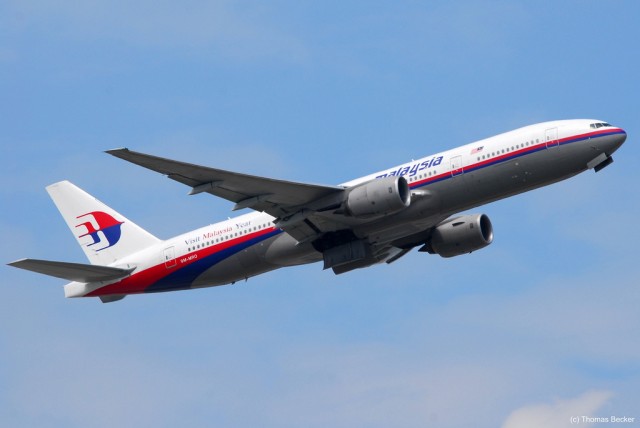
This Boeing 777-200 (reg number: (9M-MRO) is the one in question with Malaysia Flight MH370 – Photo: Thomas Becker
Almost exactly one week after the Malaysian authorities confirmed that MH370 operating from Kuala Lumpur to Beijing had gone missing – today, in an astonishing turn of events, the government confirmed that Malaysian Airlines Flight 370 was hijacked. They have further confirmed that the aircraft was steered off course and flown for nearly seven hours. To where, they have not yet confirmed.
There is so much innuendo and speculation floating around, AirlineReporter’s senior staff thought we should throw our hats into the ring.
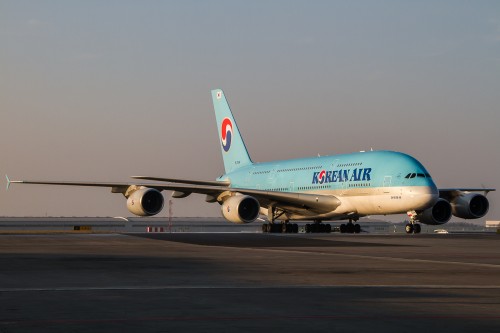
Korean Air’s A380 visits Prague for the first time – Photo: Jacob Pfleger | AirlineReporter
Yesterday, Korean Air premiered their Airbus A380 to Prague on their regular scheduled flight from Seoul. I was fortunate enough to receive an invitation to welcome the aircraft to Prague.
This was the third A380 operation to Prague since its introduction to service. The first was a Lufthansa bird, which came to Prague for crew/diversion support training, and then Emirates last year on a medical diversion.
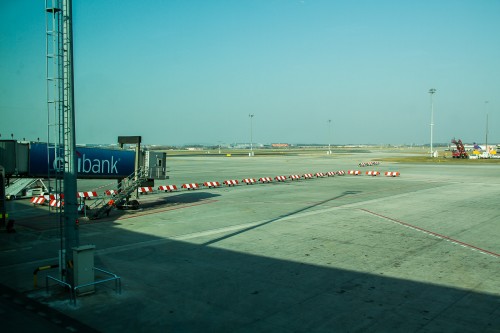
A special viewing area set up for the event in the adjacent gate – Photo: Jacob Pfleger | AirlineReporter
Korean Air presently operate eight A380’s in their fleet and they deploy them primarily on their key routes to Los Angeles and Hong Kong; this one-off flight to Prague therefore came as a bit of a surprise. The reason behind this aircraft substitution (in lieu of the regular A330/B777 mix on the route) was due to a major EU technology conference in Hanover and the requirement for a large business class cabin.
Korean Air operates the least-densely-configured A380. The lower deck consists of 12 first class seats and 301 economy class seats with a generous 34-inch pitch. The upper deck is all business class, with a 94-seat cabin -this is by far the largest business class cabin on an airliner (mixed-class) to date.
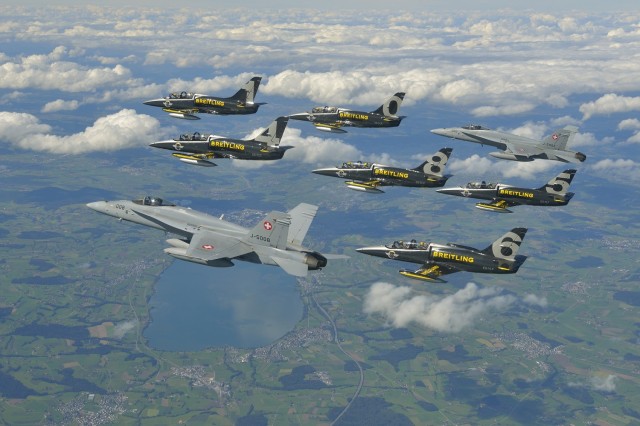
The Breitling Jet Team flying in formation with two Swiss Air Force F/A-18 Hornets – Photo: Breitling SA
Around the world there are a number of government-run aerial demonstration teams. Australia has the Roulettes, Canada the Snowbirds, and Great Britian has the Red Arrows. The United States has two of these government-run teams, the US Air Force Thunderbirds & the US Navy Blue Angels. If you’re an American AvGeek, you’ve likely seen one of those domestic teams in your lifetime.
However there are some privately-run Aerial demonstration jet teams in the world, the largest of which is sponsored by luxury watch manufacturer Brietling. The Breitling Jet Team, composed of seven L-39C Albatros jet aircraft, have announced a major change to their 2015 schedule.
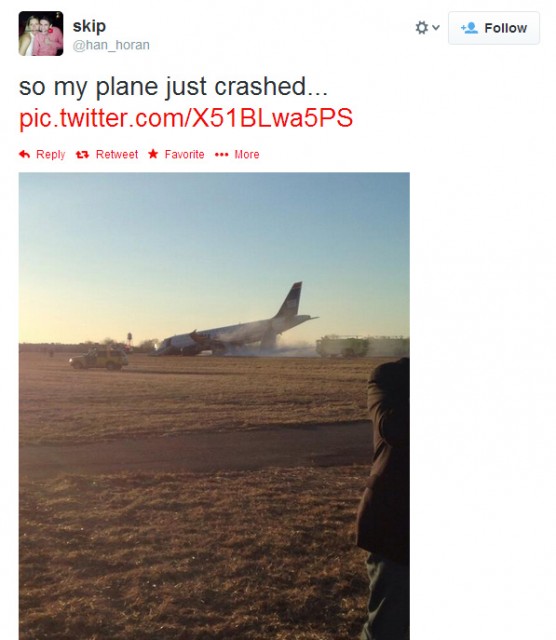
Photo of the US Airways A320 from @han_horan
US Airways flight 1702 from Philadelphia (PHL) to Fort Lauderdale (FLL) slid off the end of the runway at PHL after an aborted take off. The flight was scheduled to take off at 5:50pm EST with 149 passengers and five crew.
The airport has reported via their Twitter account that the “Nose gear of plane collapsed on runway. The incident is under investigation. All passengers safely evacuated. No reported injuries.” The airport has done a great job keeping passengers up to date with their their situation.
This incident once again shows the power of social media and how stories and photos can quickly circulate around the internet. There has even been a selfie of the wrecked aircraft posted, which has gone viral in both mainstream media and social media.
The airport was on a ground stop while handling the situation.
Just before 8:00pm, US Airways posted on Twitter, “Initial reports flt 1702 PHL-Fort Lauderdale blew a tire on takeoff & takeoff was aborted. We are taking care of our customers & crew.”
The Association of Flight Attendants reports that, “there are no crew injuries and only minor injuries to passengers.”
US Airways released a statement: ’œInitial reports indicate Flight 1702 from Philadelphia to Fort Lauderdale blew a tire on takeoff and the pilot elected to abort takeoff. Our crew safely evacuated the passengers and one person has requested medical assistance. We are re-accommodating passengers on a new aircraft, which is scheduled to depart later this evening.’

Image of the plane off the runway by @JimmyStyle
This story is developing…
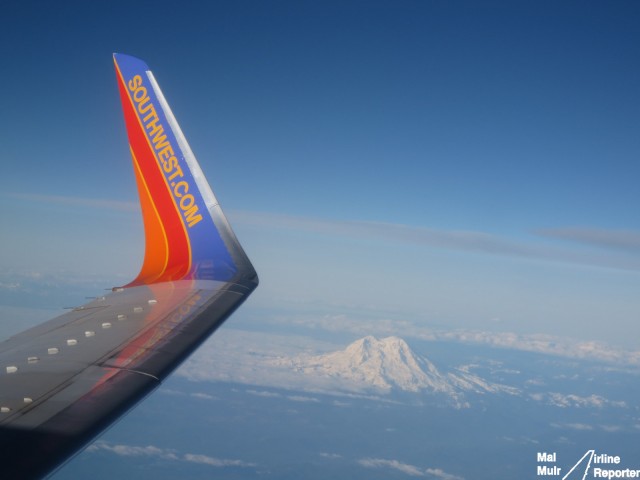
What better photo than a winglet & Pacific Northwest icon Mt. Rainier?
During the recent Aviation Geek Fest, a reader of AirlineReporter suggested that I do a bit of a roundup of all the different ’œwinglets’ that are out in the aviation world (I wish I remembered you name). With so many different kinds of wingtip devices out in the marketplace, there needs to be a handy guide as to what they all are and what aircraft they belong to. But first maybe a little bit of background on what a winglet actually does.
In the late 1970’s, NASA engineer Richard T. Whitcomb took some research from the 1950’s and further developed what we know as the winglet. NASA wanted to see what would happen if they were to create a wingtip device that, with the correct angle and shape, could help reduce drag and increase lift, and also help break up the wingtip vortices.
Getting these benefits from the wing helps make flying easier and increases fuel efficiency – something that back in the 70’s wasn’t as crucial as it is now. How much fuel can you save by adding a winglet? On average, a 737 can save around 4% when compared to a non-winglet version. A winglet is really designed to save money when flying long distances at high altitudes, so long flights are where the most savings are realized.






